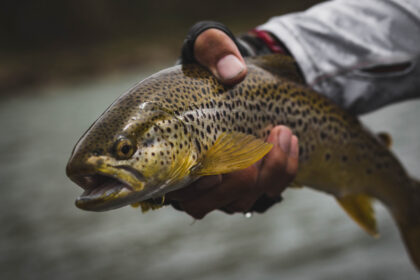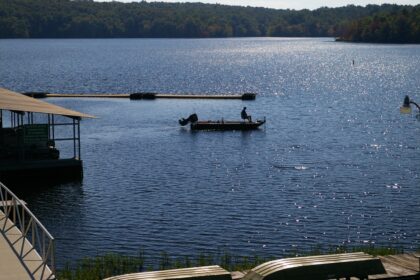Every angler knows the importance of having the right equipment for trout fishing. Colorado is no stranger to these beautiful fish, and knowing what to bring is paramount to your success. You may first look at your rod, reel, and line, but just as important is your tackle box. Having the right bait, hooks, and weights is vital for attracting and catching trout, and in this article, we’re going to take a look at the Trout Fishing Tackle you should be sure to bring for your next Trout Fishing Adventure!
1: Best Hooks for Trout Fishing Tackle
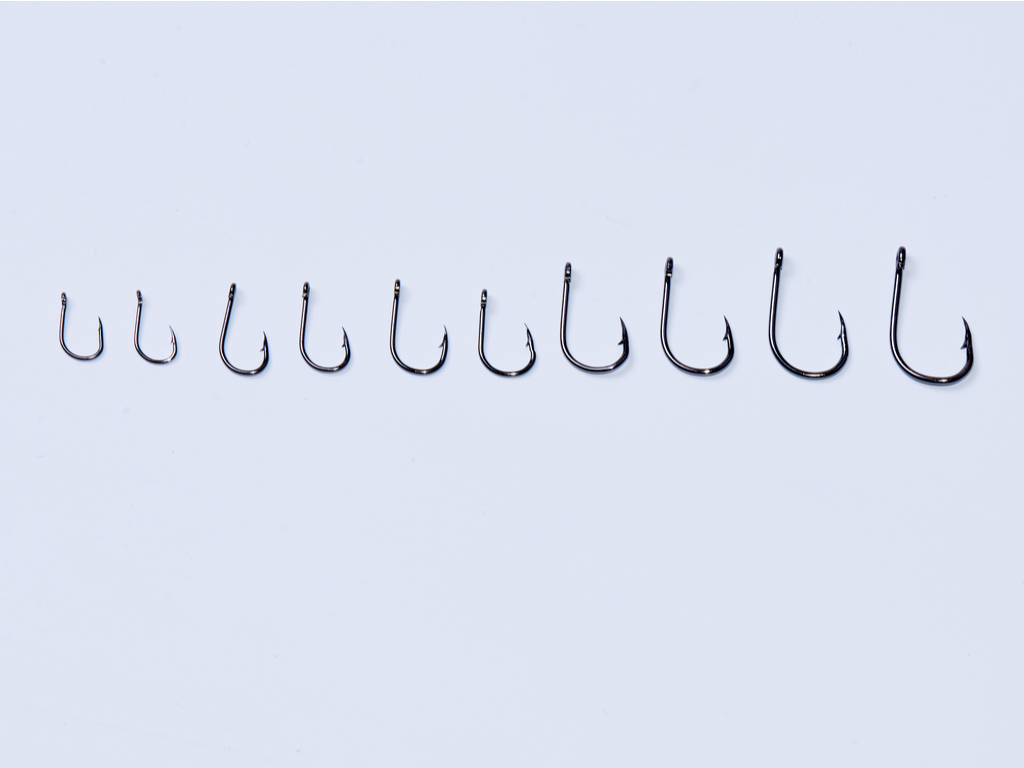
A great, simple place to start when organizing your tackle box is with your hooks. What’s the right size for the trout you’re looking for? Typically, the best hook sizes are around sizes 6, 8, and 10. These hooks aren’t too big for the fish to really clamp down on, but they will ensure that they’re strong enough to handle the fights these trout like to put up. You can buy these hooks pre-snelled for a reasonable price, but if you’re looking to save some money and practice your knot-tying, check out our guide for snelling your own hooks and other essential knots!
2: Trout Fishing Tackle Sinkers
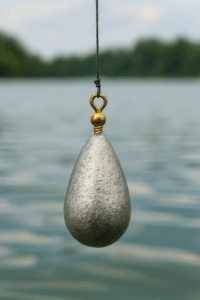
For trout fishing, your best bet is to go for a few smaller, lightweight sinkers. The best weights for your sinkers are anywhere from 1/64 to 1/8 oz if you’re trying to get a bit deeper for the bigger fish. For shapes of sinkers to consider, try using a bell-shaped sinker. Its aerodynamic shape helps it glide through the water and have a smoother descent after you cast. Other shapes you could look at include split-shot sinkers underneath a bobber, or pyramid sinkers, which are useful for holding live baits.
3: The Top Trout Fishing Tackle Baits
There are a few different types of bait that work beautifully for catching trout in Colorado. Here are some of the best options and when you would want to use them:

Salmon Eggs
These shine brightest during the fall and winter, particularly during salmon and sucker spawning. Salmon eggs already make up a hefty portion of a trout’s diet during this time, as the calorie-dense eggs appeal greatly to trout, particularly as other sources of food (such as insects) start to die out in the colder weather. Consider using salmon eggs in rivers with currents, particularly near spawning areas.
Worms
Worms are a natural, high-protein part of a trout’s diet and can be particularly effective for catching trout near the surface of the water. They work best in the early morning, late evening, or right after heavy rainfall, when worms are at their most prevalent. Make sure to leave a portion of the worm hanging free to wriggle and attract trout as you hook them!
PowerBait
If you’re out on a still body of water, such as a pond or a lake, where fish are actively stocked, consider using PowerBait. It often gets a bad reputation because it’s similar to the food that stocked fish were raised on, but it remains a solid option for trout fishing and can be worth trying if other bait isn’t producing. Use PowerBait during the early morning and late afternoon/dusk. It works especially well when the water is colder, such as in the winter or early spring. The staining of the water will help the PowerBait stand out and be more attractive to trout.
4: Lures for your Trout Fishing Tackle Box
For a more active fishing style, with more casting and reeling, look to lures for your next trip. Some lures to consider include:
Swimbaits

These mimic the movements of baitfish, such as minnows. Swimbaits are effective year-round, making them an essential part of every tackle box. It can be difficult to find a good quality swimbait at a reasonable price, but luckily, our state-of-the-art TRUSCEND fishing lures are affordable, high quality, and can be found right here on our website!
Spinners
These are another common lure that work great for catching trout. They’re inexpensive and very effective in low-light conditions or murky and choppy waters, when the trout’s attention to vibration is higher. Spinners work best in cooler water, around 50–60°F, so look to use them during the spring and fall seasons.
Tube Jigs
If you prefer jigging rather than casting and reeling for bigger trout, tube jigs are an excellent choice. In the fall, when fish are more aggressive, they’re especially effective. Different colors of jigs work best for different conditions: darker, natural colors for clear water, and brightly-colored jigs for murky waters to catch trout’s attention. Their versatility makes them an attractive choice for any trout angler.
5: Flies to put in your Trout Fishing Tackle Box
Trout can be an incredibly fun fish to target with fly fishing! If you don’t know how to fly fish, that’s completely okay, but for those looking to dip their feet in the water, there are many different types of flies that work. Here are three staples:
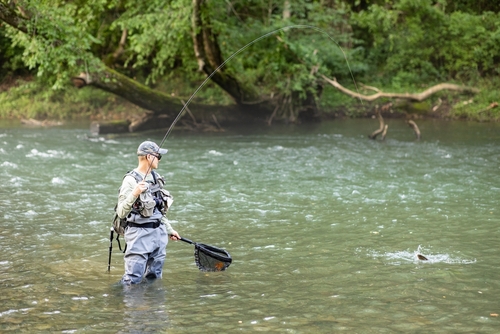
Woolly Buggers (nymph/streamer)
These flies are great for all-around fly fishing for trout. They are extremely versatile and effective in many conditions. If you’re starting out and unsure which flies to use, this is a solid choice.
Pheasant Tail Nymphs
For fast-moving water, these nymphs are well-known producers of trout. They work best in areas where mayflies are common, as this is the insect they imitate. This fly is a top producer and an essential part of your fly fishing tackle box.
Elk Hair Caddis
For dry fly fishing, few patterns can compare to the Elk Hair Caddis. This popular pattern has remained unchanged since the 1970s and is still effective today. These flies are great for floating on the top of the water. Use them when flies are spawning or during the warmer months, like late spring and summer.
6: Other Trout Fishing Tackle Essentials
Swivels
Swivels are crucial for keeping your line straight when fishing with faster lures like spinners and swimbaits. Stock up on a few of these before you go out and fish for trout. They’re inexpensive and will save you a lot of headaches and valuable time on the water.
Bubbles (floats)
To help your fly casts get more distance, consider using bubbles. You can add water to these bubbles for greater weight and control in your cast. They pair well with flies in the tried-and-true “fly-and-bubble” rig.
Stringers
Stringers will help you keep fish alive and contained. Typically, two will be sufficient for a successful fishing trip to hold all of your trout.
Nets
A good net size is any net with about a 12–16 inch diameter, though smaller nets may work just as well for tighter areas like streams.
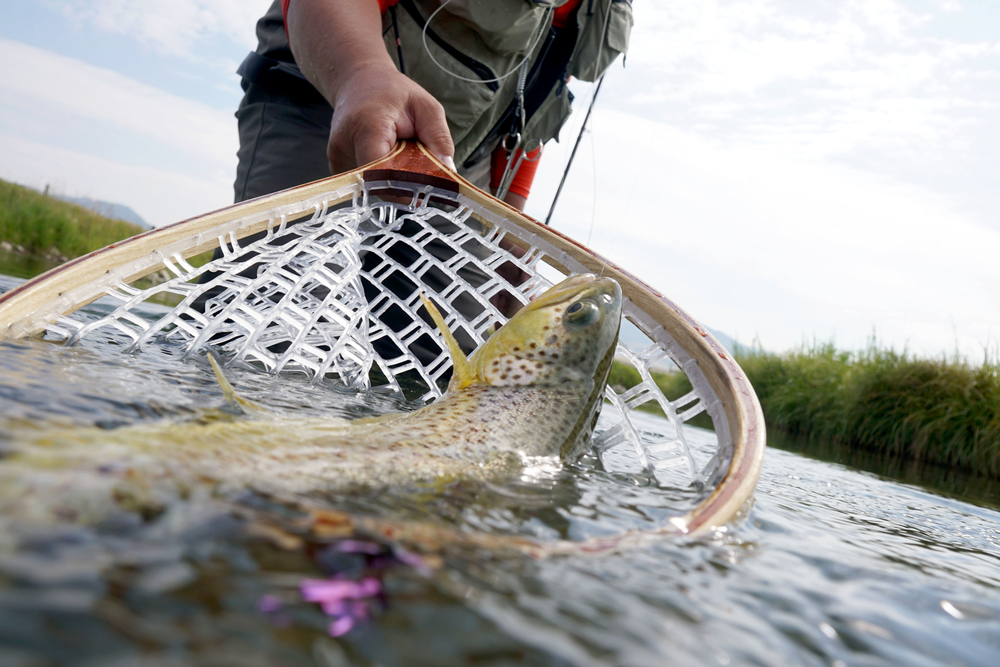
Conclusion: Putting Your Trout Fishing Tackle Box to Good Use
Today, we’ve looked at all sorts of different kinds of equipment to use for your next trout fishing adventure. We’ve covered hooks, sinkers, bait, lures, flies, and other essentials for your tackle box, as well as detailing some of the specifics for using each of these tools. Of course, much of the joy of fishing is finding what works best for you! What may work well for other anglers may not produce for you, and vice versa. This guide will give you a good starting point, but keep experimenting and let us know what setup works for you. Good luck, and happy trout fishing!


